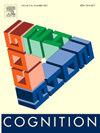小鼠跟踪的时空动力学揭示了Simon任务中一致性序列效应的一般和选择性控制机制
IF 2.8
1区 心理学
Q1 PSYCHOLOGY, EXPERIMENTAL
引用次数: 0
摘要
冲突反应之间的竞争增强了对后续试验反应的认知控制,产生一致性序列效应(CSE)。本研究通过测量计算机鼠标跟踪Simon任务的时空动态,探讨了冲突后控制在CSE中的作用机制。为了检验由反应冲突驱动的对照特异性CSEs,采用了混淆最小化设计,严格控制刺激重复、反应重复、偶然性学习和反应错误。我们提出了水平和垂直的西蒙任务,每个任务都有两种不同的刺激和反应选择,以试验到试验的交换顺序。参与者通过将鼠标光标从屏幕中心移动到目标响应框来做出反应,目标响应框由刺激的颜色而不是位置决定。分析了空间精度和运动速度的动态特征,以及离散运动延迟和空间特征。除了典型的西蒙效应外,我们还发现冲突后减缓和任务无关反应激活的选择性抑制是冲突后控制的两种可区分的模式,表现在不同的运动特征和加工阶段。这表明CSE可能产生于冲突后控制的两个子过程,而不是一个单一的机制。本文章由计算机程序翻译,如有差异,请以英文原文为准。
Spatiotemporal dynamics of mouse tracking reveal general and selective control mechanisms of the congruency sequence effect in Simon tasks
Competition between conflicting responses enhances cognitive control over responses on the subsequent trial, generating a congruency sequence effect (CSE). The present study investigated the mechanism of post-conflict control involved in the CSE by measuring the spatiotemporal dynamics underlying the Simon task with computer-mouse tracking. To examine control-specific CSEs driven by response conflict, a confound-minimized design was employed, rigorously controlling for stimulus repetitions, response repetitions, contingency learning, and response errors. We presented horizontal and vertical Simon tasks, each with two distinct stimulus and response alternatives, in a trial-to-trial interchanging order. Participants responded by moving a mouse cursor from the screen center to a target response box, determined by stimulus color rather than its location. Dynamic features of spatial precision and movement speed, as well as discrete movement latency and spatial features, were analyzed. Beyond the typical Simon effect, we identified post-conflict slowing and selective suppression of task-irrelevant response activation as two distinguishable modes of post-conflict control that manifest in different movement features and processing stages. This suggests that the CSE likely arises from two sub-processes of post-conflict control, rather than a unitary mechanism.
求助全文
通过发布文献求助,成功后即可免费获取论文全文。
去求助
来源期刊

Cognition
PSYCHOLOGY, EXPERIMENTAL-
CiteScore
6.40
自引率
5.90%
发文量
283
期刊介绍:
Cognition is an international journal that publishes theoretical and experimental papers on the study of the mind. It covers a wide variety of subjects concerning all the different aspects of cognition, ranging from biological and experimental studies to formal analysis. Contributions from the fields of psychology, neuroscience, linguistics, computer science, mathematics, ethology and philosophy are welcome in this journal provided that they have some bearing on the functioning of the mind. In addition, the journal serves as a forum for discussion of social and political aspects of cognitive science.
 求助内容:
求助内容: 应助结果提醒方式:
应助结果提醒方式:


